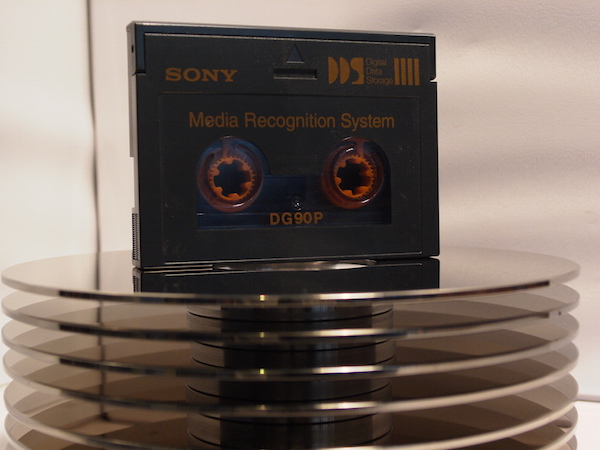25 years ago, a post was made onto Usenet to announce the immediate availability of a new backup product called NetWorker. Thanks to Google’s archive of Usenet, you can still read the original post here. There’s a lot of delightful snippets in there and I really recommend anyone interested in the history of NetWorker to take a few minutes out to read it. What perhaps caught my eye most was this very future-looking line in the introduction:
And as your network and volume of files expands, NetWorker has the capacity and performance to handle the load.
I think it’s fair to say that with it now being 25 years old, NetWorker has lived up to that claim. More than that, of course – the product did what it promised and is still going strong today, having been under EMC’s stewardship for the last 11 or 12 years. NetWorker was designed from the ground up to be expandable, reliable, fast and – just as importantly – a framework. This to me is where NetWorker has stood out over the years. It’s easy to create a widget that has everything you think a customer might need. The smarter business though creates a widget that has a lot of what a customer might need and is extensible so the customer can increase its usefulness to their own organisation.
Remember that old adage … don’t skate to the puck: skate to where the puck is going. Framework based products are built on that premise.
The photo above is a bit of a walk down memory lane. There was a time for me when DAT tapes ruled my working life. They were the core technology we used for backups at my first employer, and it’s sitting on a deconstructed 500MB drive that had been the first index disk for the first backup server I administered. As you can imagine based on that photo, the index disk failed. That taught me the virtue of having data protection for your data protection (and just how hard it was to fight for a pair of 2GB drives for index mirrors back in the mid-late 90s).
Funnily enough, the first backup server I administered was even called mars. If you’ve ever looked at a NetWorker man page, you’ll understand the humour. Here’s an excerpt for instance from the mminfo man page:
NetWorker was the first enterprise backup product I ever used, and I started my long history with it in 1996. I joined a Unix system administration team and was told something along the lines of:
We just installed this new backup product. You can administer it.
I think a lot of backup administrators started that way – particularly back then. Backup was something given to the junior administrator. It was the start of a very long relationship with NetWorker, but I can also look back at it now and say that it was operationally wrong to give backups to the most junior person in the group. There’s nothing wrong with juniors being involved in backups, but to be in charge of their overall operation and configuration? That should be a senior administrator.
These days we’ve certainly seen that data protection attitudes have (for the most part) shifted. Now given the volume and variation of data encountered by an average business, the people most equipped to make decisions around backup/recovery (and all other aspects of data protection) are the senior technical experts in the business. To overload an EMC term, I’ve constantly referred to these people over the last few years as the Data Protection Advocates.
My initial stint as a Unix system administrator had me configuring and operating a variety of NetWorker environments across a diverse number of locations in Australia. In addition to my main NetWorker sites in Newcastle, NSW, I had datazones in Sydney, Perth, and far north Queensland, just to name a few areas. Some of those environments were somewhat inimical to technology. One site in far north Queensland for instance would have to get their DLT jukeboxes swapped out every 6-9 months, and would have to air-blast them before sending them back.
A computer room is just somewhere with less than a centimetre of coal dust in it.
It was in those early days that I became a strong user of the NetWorker command line, simply because the network connections between my office and those remote sites were minimal at best. Running a GUI over those links was practically impossible, so I learnt everything from mminfo to nsradmin and manual recovery via a uasm stream from a partially failed tape.
My first NetWorker server was a Sun system, and it was running Networker 4.1. (Or under a rebadging agreement: Solstice Backup.) We had some v3.x clients – we even had some AT&T Unix boxes getting backed up via NFS mounts. So while I’ve not used NetWorker since the very start, I remember the excitement of ‘new fangled’ things such as storage nodes and file type devices. Not advanced file type devices, file type devices. I saw the switches in resource database formats (specifically moving from nsr.res to nsrdb), the changes in media database and index formats, more modules, consolidation in operating systems as the operating systems themselves came and went, and through it all: successful recoveries.
At the end of the day, that’s what NetWorker is all about: being able to recover the data when we need to, and that’s what NetWorker did. There’s no doubt in my mind – I’m aware of some of them myself, including some very large businesses, but I won’t name names – there are many businesses operating today who owe their continued operation to NetWorker facilitating an urgent, mission critical recovery when the chips were down.
But it’s not just me who is celebrating NetWorker being around for 25 years. There’s some great official EMC resources available with stories from other long-term users, examples of prior marketing material and install kits, and an infographic on how far things have come. Take a few minutes out of your schedule and check them out!



Don’t forget to mention GEMS: http://www.cbronline.com/news/legato_gears_for_enterprise_storage_management
— mark